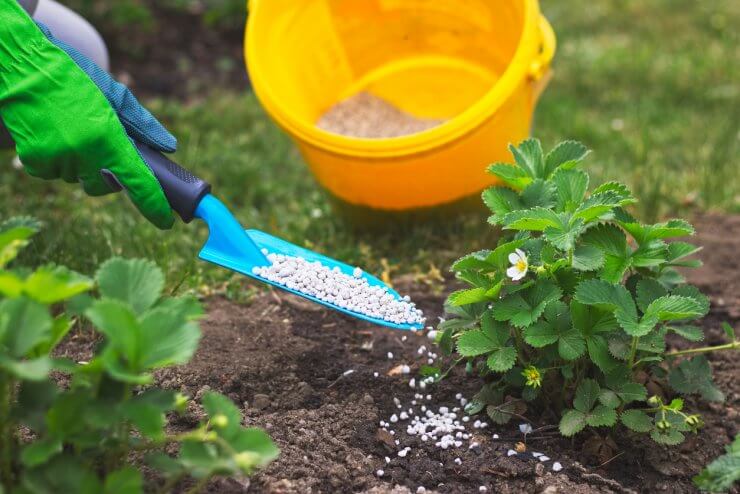
Fertilizing strawberry plants
Once your strawberry plants are in the ground, there are a number of things you should do to help them thrive. First, note that flowers that show up earliest tend to produce the largest fruit, but flowers are also susceptible to frost early in the season. Cover your patch if temperatures dip below freezing in the spring.
Weed by hand or cultivate the soil around strawberry plants regularly with a hoe, working fairly shallow to uproot weed seedlings. Don’t disturb the soil more than an inch deep—you can damage a strawberry’s shallow roots and also bring up weed seeds to where they can germinate.
Fertilize with a slow-release generic product or strawberry food for best yields.
Remember to remove all flowers from June-bearing strawberries in the first year, and all flowers until June 1 for everbearing and day-neutral strawberries in the first year. Your plants will be stronger and healthier and will reward you with better fruit afterwards.
Strawberries like to get the equivalent of 1 to 1 1/2 inches of rainwater per week. Use a rain gauge to monitor rainfall and water with a soaker hose or drip system if needed. This keeps water at the roots and avoids wetting the leaves—wet leaves are a prime host for strawberry diseases.
If you must use overhead watering, water in the morning so leaves have time to dry out during the day. One good soaking a week should suffice. Remember to pinch off runners for day-neutral and everbearing types of strawberries, and for June-bearing, place the runners where they fit into the garden or cut them off. Gently press the end of the runners you’re keeping into the ground to encourage the daughter plants to root there.
Don’t forget that day-neutral plants flower and fruit throughout the summer, so if plants aren’t growing well, apply organic fertilizer such as compost or blood meal to give plants a boost of nitrogen. The same goes for June-bearing plants that aren’t producing a lot of runners throughout the season.
After harvest, continue to water plants. Thin them out, leaving remaining plants about 6 to 8 inches apart. The plants you should remove are the older, woody ones, leaving the younger plants for next year. Keep removing runners for June-bearing strawberry plants if there is a lot of crowding.
After plants have entered dormancy due to cold temperatures and temperatures are staying below 40 degrees F, it’s time to think about overwintering, which is covered in “Winterizing your Strawberry Plants.”
In the following spring, you may need to add more compost or organic nitrogen to encourage new plant growth and fruit development.
How often do you have to fertilize or water your strawberry plants? Please tell us your tips for nurturing healthy plants.


 Previous
Previous


For pinching off runners do you pinch off the entire runner?
Yes, the whole thing!